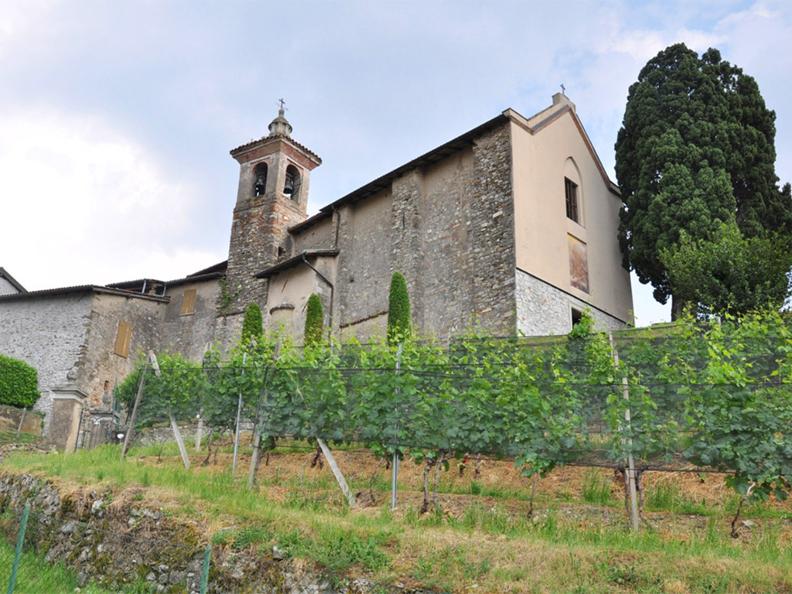
The church of San Sisinio sits at the top of the street running from Palazzo Pollini to Collina della Torre.
Along the way you pass the “new” cemetery of the Torriani family, a striking semi-circular structure built in 1838. The castle belonging to the Torriani family used to dominate the hill. It was destroyed in 1242 when the Milan forces attacked Mendrisio during the Guelph and Ghibelline struggle.
The church is now all that remains of this castle. In the past it also acted as an autonomous parish church, run by the Serviti religious order (1451–77) and later by a prior.
The building has been modified several times over the centuries, especially in the 17th century. In 1793 the parishioners sold the beautiful polyptych painted by Bernardo Luini in 1524 that adorned the main altar; a large print of the original now sits on the altar.
Neoclassical frescoes were added to the walls of the church in 1816. Those closest to the church door are by Francesco Catenazzi, followed by others by Abbondio Bagutti, who also decorated the choir.
The altarpiece (1786) portraying the martyrdom of San Sisinio is by Giovan Battista Bagutti. The patron saint is about to be beheaded, having refused to deny the faith and make sacrifices to the pagan gods.
An eighteenth-century nativity scene adorns the choir. The Torriani family bought this in Munich in 1856. Its message is that not everyone was aware of the extraordinary circumstances and importance of Christ’s birth: in fact, daily life carries on as usual around the crib in the centre, providing us with some realistic glimpses of everyday activities.
Accessibility Services
This cultural/tourist point of interest took part in the digital data mapping project on accessibility by Pro Infirmis. The project was carried out with the collaboration and support of Ticino Turismo, the four regional tourist organisations and the Department of Education, Culture and Sport.
All information on the accessibility of the partner in question can be found on the following page.